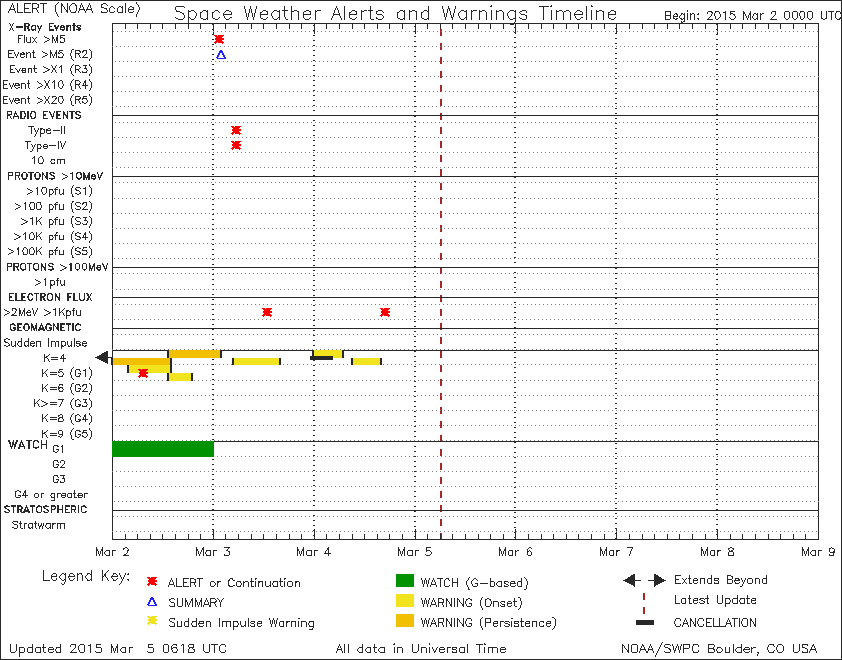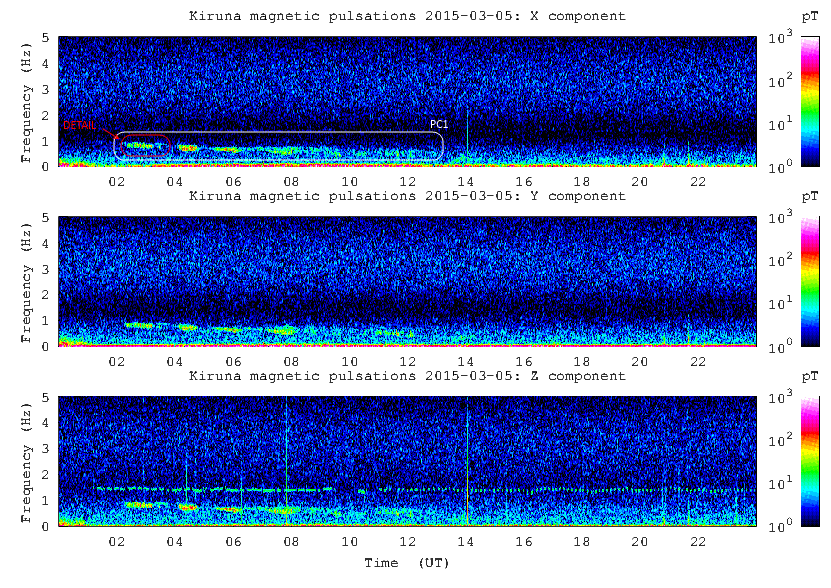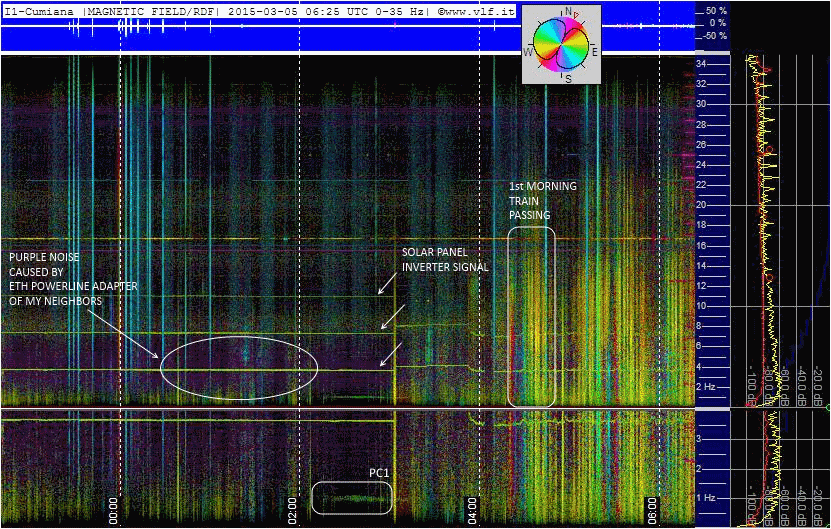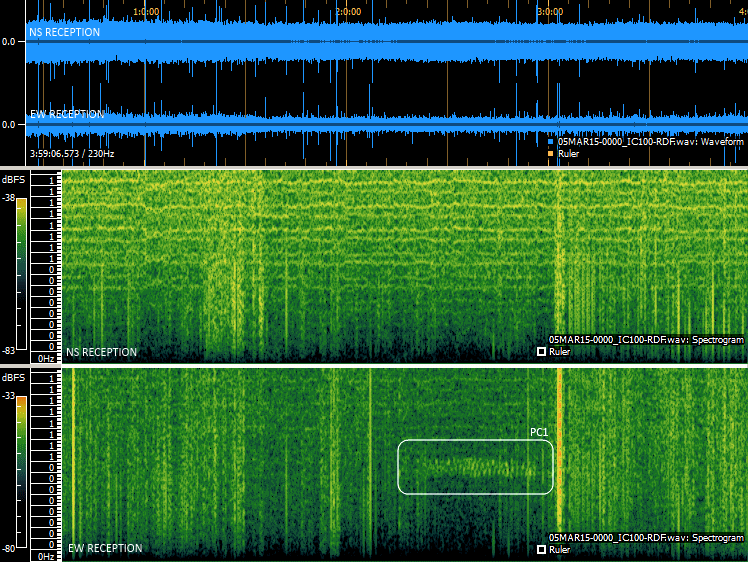Opera 2015 - Magnetic
Pulsation 006
2015-03-05 night time from 00:02 to 03:00 UTC, PC1
Geomagnetic activity as reported by NOAA (http://www.swpc.noaa.gov/products/notifications-timeline)

PC1 detected by IRF
of Kiruna (http://www.irf.se/maggraphs/puls.php).

The
white box contains the entire all-night pulse , in red box (pointed as
detail) the one received from Cumiana observatory.
Source file:
05MAR15-0000_IC100-RDF.wav
2015-03-05 00:00 to 04:00 at OpenLab st. 01 - Cumiana (TO), N
Italy
Stereo file acquired with two orthogonal induction coils: NS on
left channel, EW on right one.
Station 01 - IK1QFK CUMIANA (TO), NW Italy

RDF reception: colors indicate the signals
coming direction. PC pulsation is
indicated in white box and is basically composed by
east-west components. The top of the spectrogram identifies the various
types of present noise.
Station 01 - IK1QFK
CUMIANA (TO), NW Italy

Here the two channels are analyzed in separate way, with sonic
visualizer. In NS directions interferences are very high: they are
caused by an Ethernet Power Adapter used by a neighbor, located
100 meters away. This gives an indication of how delicate the
choice of "where to place" an induction coil can be. Noise apart,
this pulsation has components only in East-West direction. This belies, as already happened
before, that the geomagnetic pulsations are best received
orienting the coil for receiving signals in a north-south
direction, because of their polar origin.
The pulsations can occur with signals oriented in all directions,
as they are generated at relatively close distances compared to
the wave length, and we are therefore in the reactive area.
By years of experience in these receptions we realized that
usually the best coil position for Geomagnetic Pulsations and Schumann
resonances reception is the East-West (then with the axis pointing
north-south).
Return to OPERA home page


